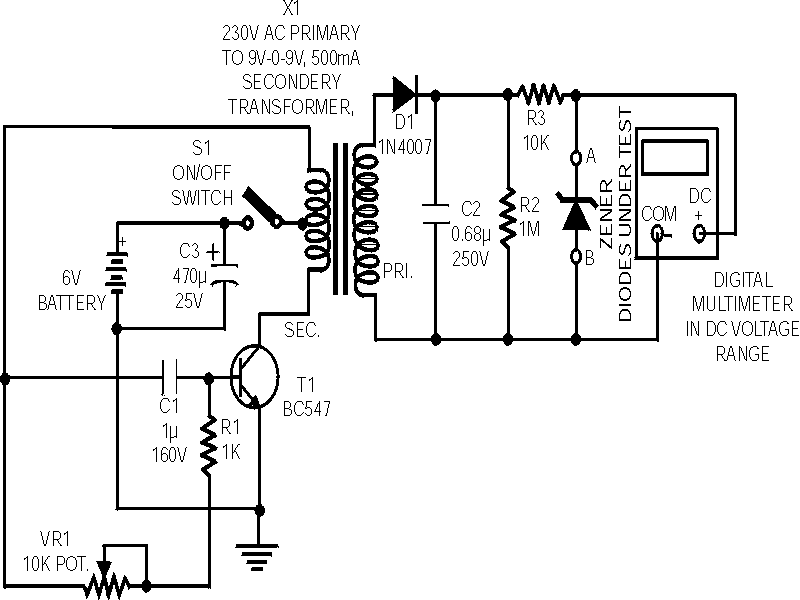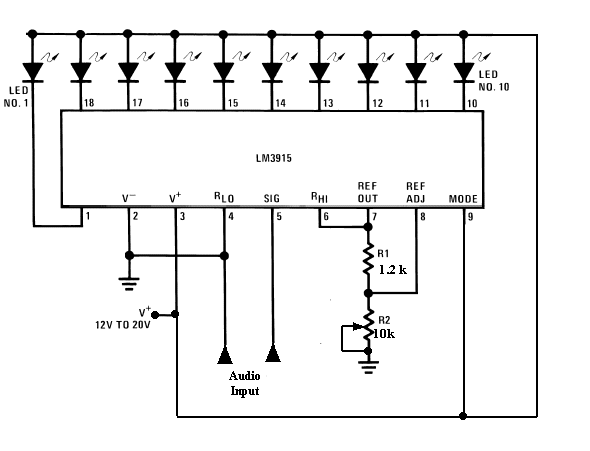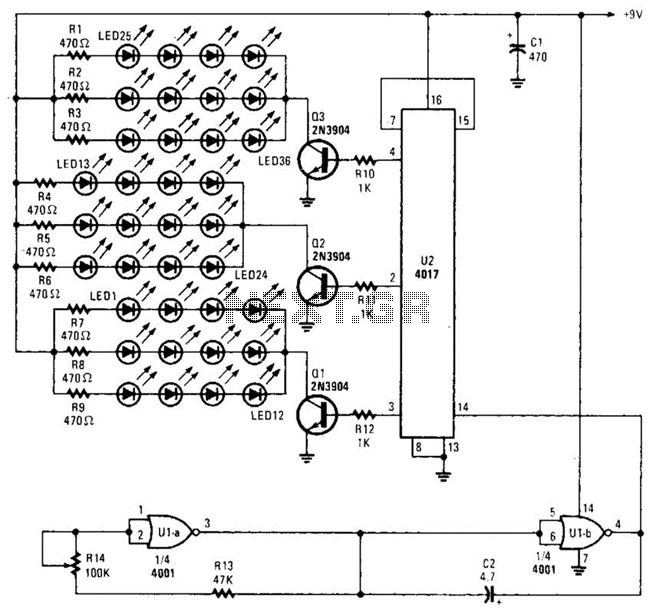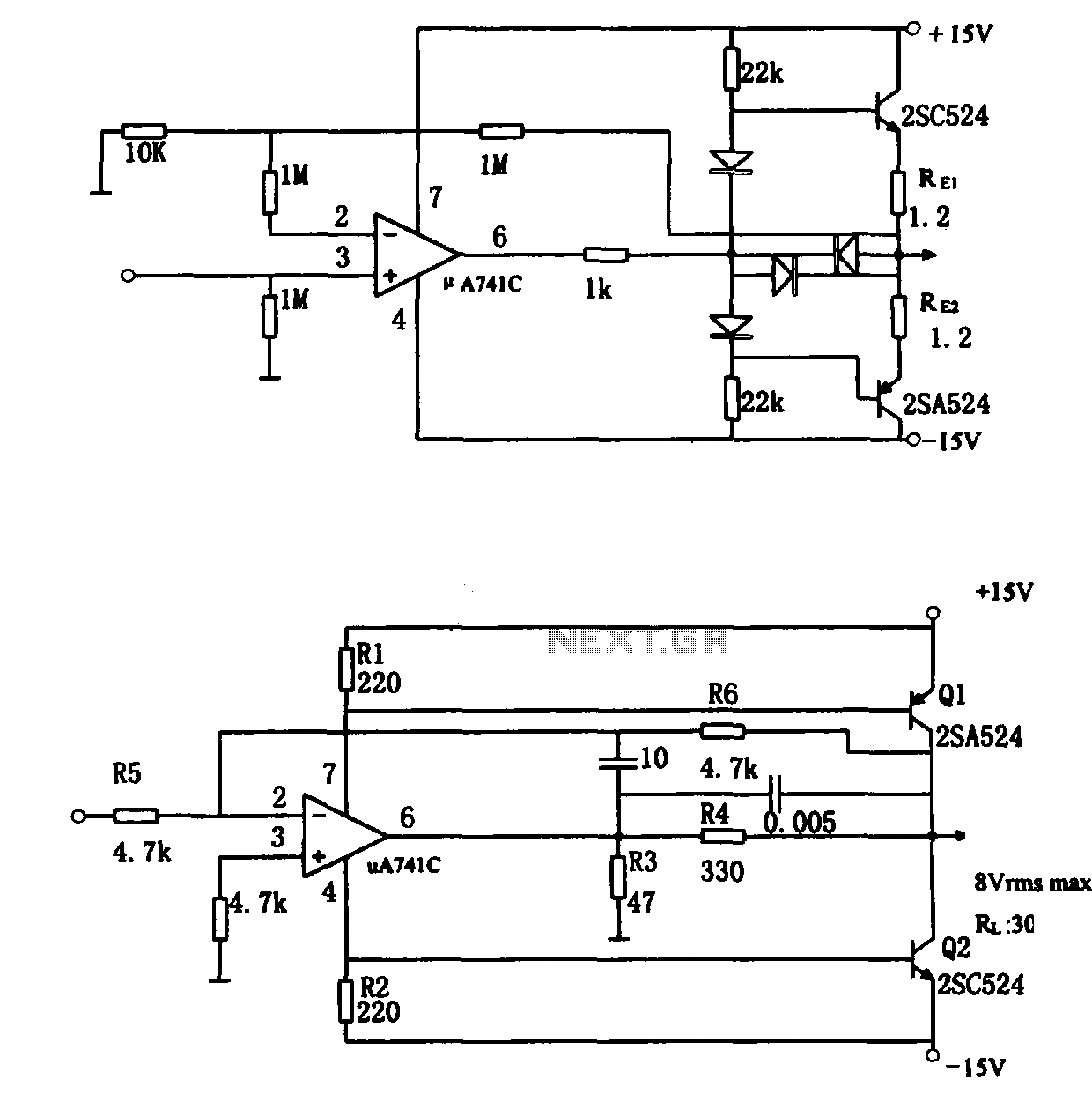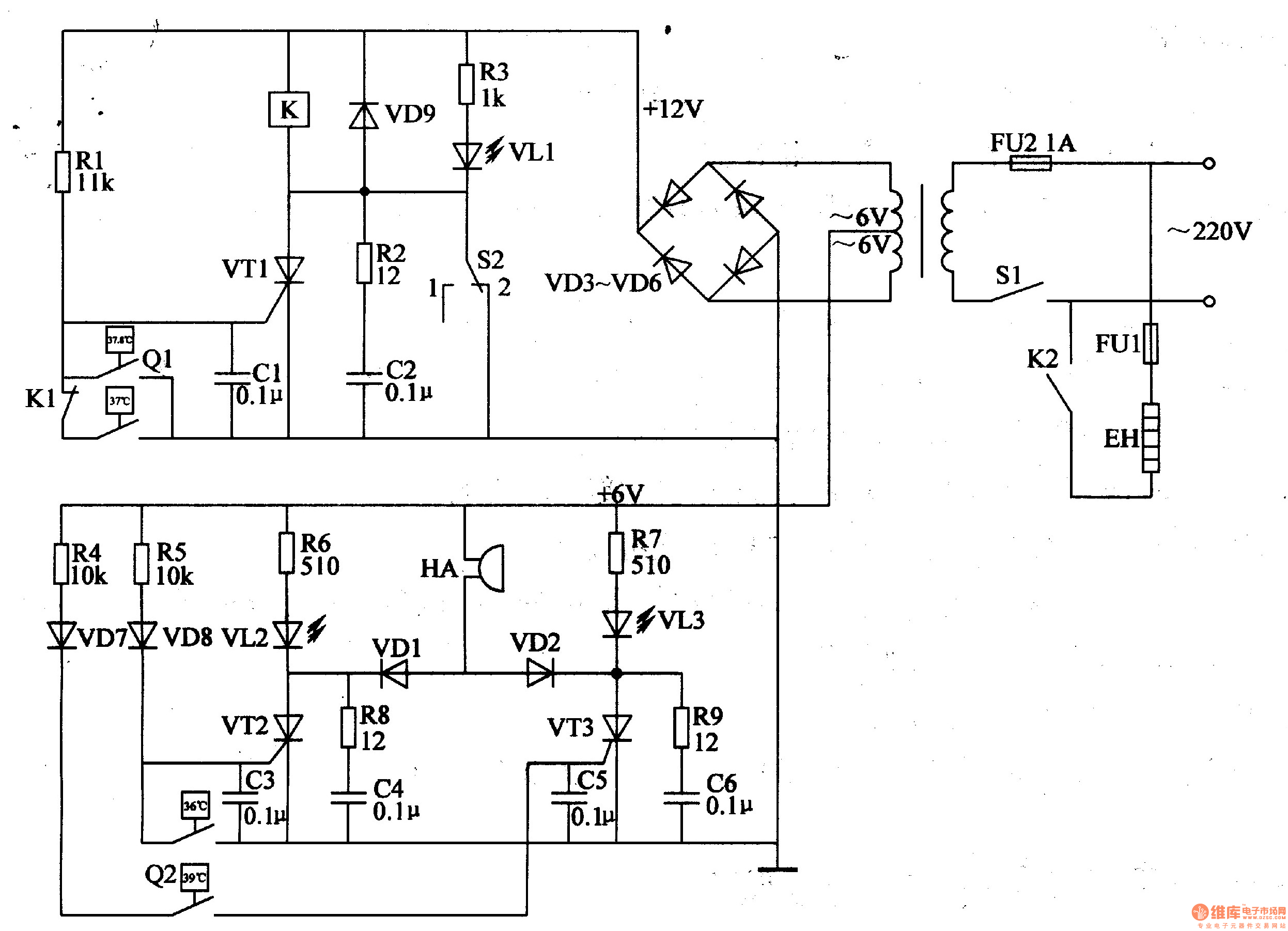
Four crystal diode switching circuit diagram of the IF filter
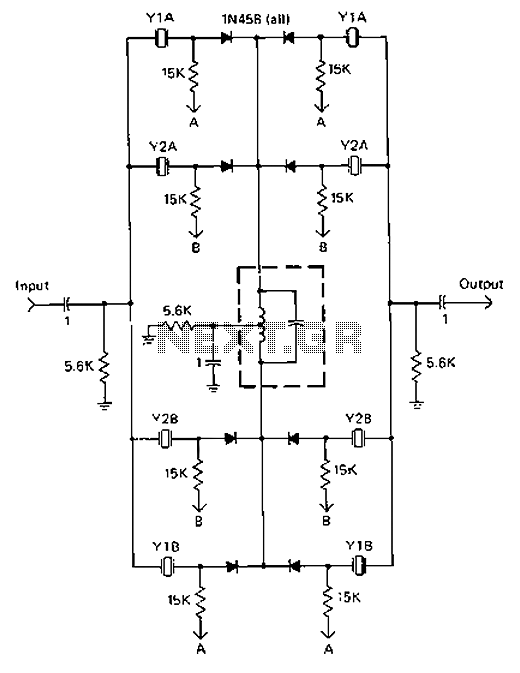
A 9-12V DC power supply is connected to control point A or point B for an amateur communication receiver IF amplifier, offering two distinct options. The power frequency is set at 455 kHz with a bandwidth of 500 Hz. The frequency of the unused crystal should be 300 Hz for continuous wave (CW) operation, rather than 2.7 kHz for single sideband (SSB). The SSB bandwidth is specified as 1.8 kHz, with an alternative of 2.1 kHz SSB bandwidth when not set to 1.25 kHz.
The circuit described operates within the amateur radio frequency spectrum, utilizing a 9-12V DC power supply to energize the intermediate frequency (IF) amplifier. The choice between control points A and B allows for flexibility in circuit configuration, catering to different operational needs or preferences of the user. The specified frequency of 455 kHz is a standard for IF stages in communication receivers, which facilitates effective signal processing and demodulation.
The bandwidth of 500 Hz indicates that the amplifier is optimized for narrowband applications, which is particularly beneficial for CW signals, allowing for clearer reception of Morse code transmissions. The mention of a 300 Hz crystal frequency underlines the design's focus on CW operations, ensuring that the system can accurately filter and amplify signals characteristic of this mode.
In contrast, the parameters for SSB operation highlight the versatility of the circuit. The bandwidths of 1.8 kHz and 2.1 kHz suggest that the amplifier can handle a range of SSB signals, accommodating various transmission qualities. The ability to select between these bandwidths allows for adaptability depending on the specific requirements of the communication scenario.
Overall, this circuit design emphasizes the importance of tailored signal processing in amateur radio applications, ensuring that users can achieve optimal performance across different modes of communication. The thoughtful selection of frequency and bandwidth parameters plays a crucial role in enhancing the clarity and reliability of received signals.9-12V DC power applied to the control point A or point B, for amateur communication receiver IF amplifier, gives two different options. Power 455kHz, the bandwidth 500Hz, the f requency of the crystal is not used should be 300 Hz CW, not 2.7kHz SSB bandwidth is 1.8kHz, 2.1kHz SSB bandwidth when not 1.25kHz.
The circuit described operates within the amateur radio frequency spectrum, utilizing a 9-12V DC power supply to energize the intermediate frequency (IF) amplifier. The choice between control points A and B allows for flexibility in circuit configuration, catering to different operational needs or preferences of the user. The specified frequency of 455 kHz is a standard for IF stages in communication receivers, which facilitates effective signal processing and demodulation.
The bandwidth of 500 Hz indicates that the amplifier is optimized for narrowband applications, which is particularly beneficial for CW signals, allowing for clearer reception of Morse code transmissions. The mention of a 300 Hz crystal frequency underlines the design's focus on CW operations, ensuring that the system can accurately filter and amplify signals characteristic of this mode.
In contrast, the parameters for SSB operation highlight the versatility of the circuit. The bandwidths of 1.8 kHz and 2.1 kHz suggest that the amplifier can handle a range of SSB signals, accommodating various transmission qualities. The ability to select between these bandwidths allows for adaptability depending on the specific requirements of the communication scenario.
Overall, this circuit design emphasizes the importance of tailored signal processing in amateur radio applications, ensuring that users can achieve optimal performance across different modes of communication. The thoughtful selection of frequency and bandwidth parameters plays a crucial role in enhancing the clarity and reliability of received signals.9-12V DC power applied to the control point A or point B, for amateur communication receiver IF amplifier, gives two different options. Power 455kHz, the bandwidth 500Hz, the f requency of the crystal is not used should be 300 Hz CW, not 2.7kHz SSB bandwidth is 1.8kHz, 2.1kHz SSB bandwidth when not 1.25kHz.
